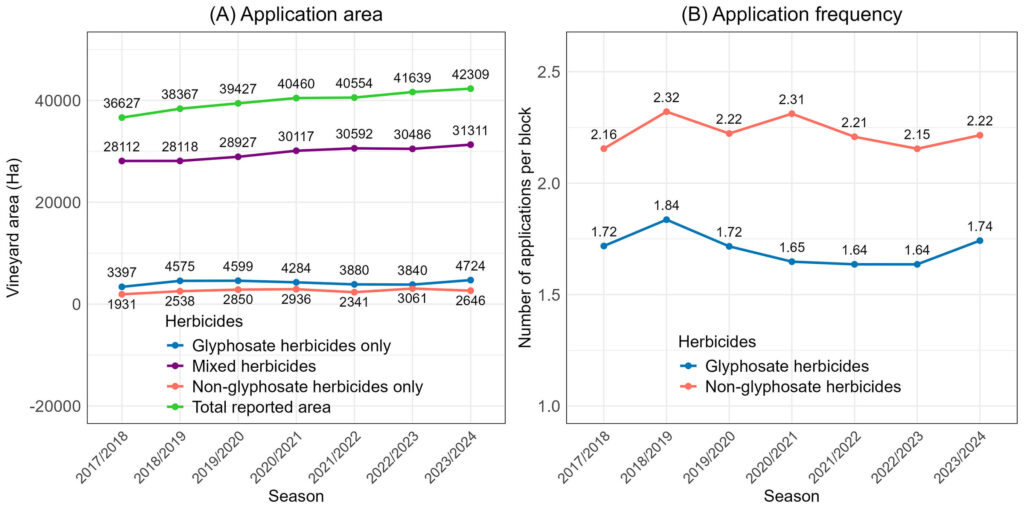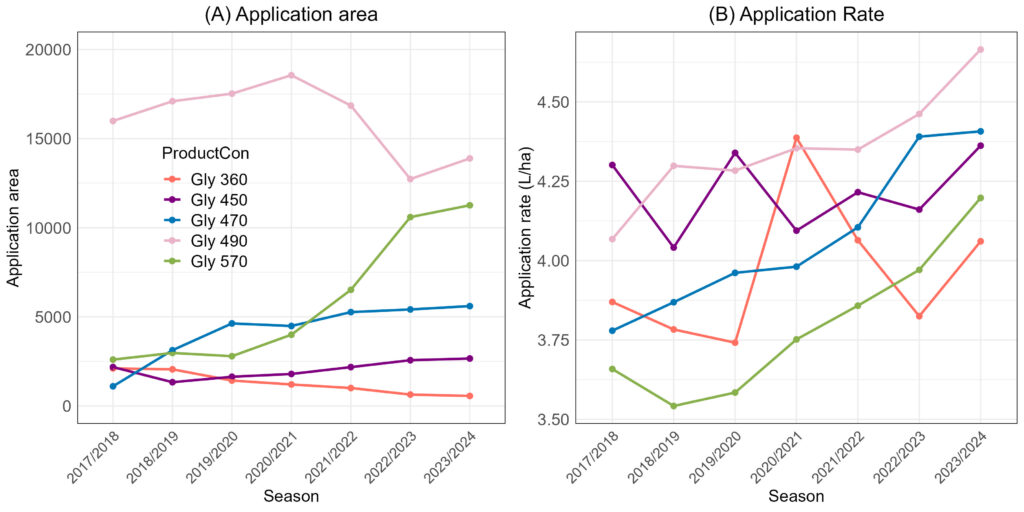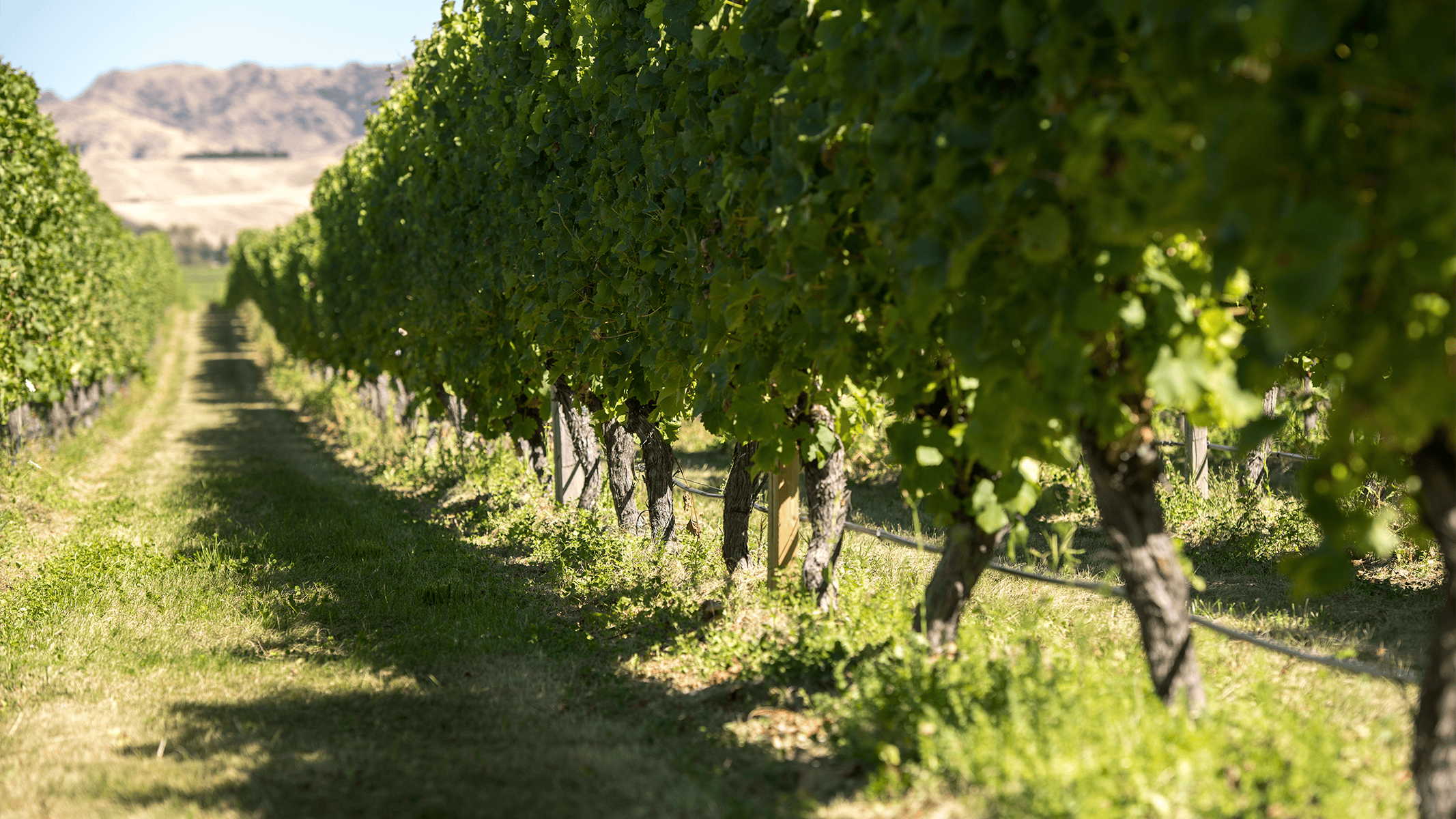Fang Gou, Paul Epee, Bragato Research Institute
Bragato Research Institute (BRI) is at the forefront of viticulture and oenology research, leveraging the power of data to drive innovation for the benefit of the wine industry. A large number of research projects are currently underway, and data is at the core. This article illustrates how BRI manages and uses data, highlighting the value it plays in research, and the importance of collaboration with other research providers and partners in delivering outcomes that benefit New Zealand winegrape growers and winemakers.
Managing and utilising data at BRI
BRI is responsible for managing a diverse array of data across several areas. Our data can be categorised into three main types: research data from both current and past projects, industry data – including spray diary data and questionnaire data collected by Sustainable Winegrowing New Zealand (SWNZ) – and data from commercial services.
While research and industry data are actively utilised for various research purposes, commercial service data remains confidential and is not used beyond its intended scope. Our approach to data management ensures that all analyses are conducted with strict adherence to confidentiality, with data being anonymised before any findings are published or presented to the broader public. This ensures that the information is communicated to end users, be they researchers or growers, without compromising the privacy of the participants in the project.
Project data is primarily analysed to answer specific research questions while also building a relational database that organises and stores data across different projects. The analysis of industry data answers inquiries submitted by members and supports larger research initiatives aimed at testing hypotheses and improving vineyard practices and winemaking techniques nationwide.
For instance, BRI received enquiries from grape growers about recent trends of glyphosate and other synthetic herbicides used in New Zealand vineyards. To address these concerns, growers’ spray information recorded and stored on Grapelink – the Spray Diary verification tool nominated by SWNZ – was interrogated. Grapelink contains over a decade of records of growers’ spray data. This platform was also used to provide background information for the preparation of research proposals submitted by BRI researchers for internal (within BRI) and external (outside of BRI) funding.
These projects aimed at finding sustainable alternatives to synthetic herbicides and fungicides in New Zealand vineyards. The section below summarises the key results of these investigations, focusing mainly on glyphosate and other synthetic herbicides based on Grapelink data.
The trend of glyphosate use in New Zealand vineyards over a seven-year period
The BRI team investigated the use of glyphosate herbicides to control weeds in New Zealand vineyards between the 2017/2018 and 2023/2024 growing seasons. The data was collected from growers’ spray diaries through the Grapelink platform.
The key information from the spray diary dataset is as follows:
- Vineyard Information: Block size, variety, planting density, training system, and canopy density.
- Agrichemical Product Information: Product names, label rates.
- Treatment Information: Date/growth stage of application, water rates, spray type, spray rates, and targets.
Glyphosate is a broad-spectrum systemic herbicide, that has been applied as a post-emergence weed management tool in New Zealand since the 1970s. However, concerns have arisen regarding its potential negative impacts on various non-target living organisms and residuals in human food. This analysis aims to understand the pattern of glyphosate use compared to other herbicides over time and its implications.

Figure 1: The application area (A) and frequency (B) of glyphosate and non-glyphosate herbicides from 2017/2018 to 2023/2024 seasons
The application area of herbicides steadily increased over time very likely due to the expansion of vineyards area over the same period. The vineyard area sprayed with glyphosate was only slightly greater than the vineyard area sprayed with non-glyphosate herbicides for each growing season, and about three-quarters of vineyard area applied mixed herbicides (Figure 1A). A total of 1,864 hectares of vineyards have been using glyphosate-only herbicides for all seven years, while 1,231 hectares of vineyards have been applying non-glyphosate-only herbicides during the same period.
During the period analysed, 57 glyphosate products were applied compared to 70 non-glyphosate products. The number of applications per block was about 1.64 to 1.84 for glyphosate and 2.15 to 2.32 for other herbicides. There was a slight decrease in the number of applications per block from the 2018/2019 season for both glyphosate and non-glyphosate herbicides (Figure 1B). The month with the highest glyphosate herbicide application is September, followed by August and November, while the first three highest non-glyphosate herbicide application months are September, November and January.

Figure 2: Five most applied glyphosate products by area (A) and their application rates (B) from the season 2017/2018 to the season 2023/2024. Application rates ranging from 1L/ha to 10 L/ha were included in this analysis, with peaks observed at 3, 4, 5, and 6 L/ha
There were five commonly applied glyphosate products by application area, Gly 490, Gly 570, Gly 470, Gly 450, and Gly 360, renamed for this article (Figure 2A). Gly 490, with a glyphosate concentration of 49%, was the most popular product in previous years but has seen a decrease in usage since the 2020/2021 season. The usage of Gly 570 (with a glyphosate concentration of 57%) has increased rapidly, reaching a vineyard area comparable to Gly 490 in the 2022/2023 season (Figure 2A). The average application rates for all five products ranged from 3 to 5 L/ha, with clear trends of increasing rates observed in recent years (Figure 2B). Figure 2 shows that growers tended to use higher concentrations of glyphosate and applied them at higher rates.
As this analysis indicates, glyphosate use at higher concentrations and rates raises the question of whether weeds are developing resistance to glyphosate or if growers are simply applying more than necessary. Further research is needed to clarify this situation.
Call for engagement
Data is more than just numbers. When collected and analysed appropriately, it becomes an extremely powerful tool that can drive innovation, inform decisions, and ultimately contribute to the growth of the wine industry. We invite researchers, growers, and industry partners to work with us in producing and sharing data that can help address the pressing challenges the wine industry is currently facing. By combining our resources and expertise, we can improve industry practices and contribute to reinforcing New Zealand’s wine reputation in the global market. BRI offers extensive support in field trial design and data analysis, aiming to tailor our services to meet specific research needs and questions.

















